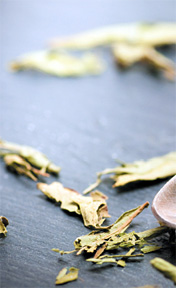Hidden Dangers
Understanding the dangers involved with children consuming aspartame, it would make sense that parents are going to avoid anything that says "sugar free" or "low calorie" or "diet" on the label.
But, many things include aspartame that you would not expect, such as Wrigley's Chewing Gum (several different flavors), General Mills Fiber One Cereals and Klondike Slim-A-Bear Ice Cream Sandwiches. Other unexpected sources of aspartame include Children's Tylenol (all flavors), PediaCare (all products), most store-brand children's fever reducers and pain relievers, and Flintstones chewable vitamins.
The only chance you have of making sure your children don't ingest any aspartame is to be a label reader. Since aspartame has been proven to cause severe reactions in people with phenylketonuria (a genetic disorder) it is easy to see if an item contains aspartame, as manufacturers are required to put the following warning on the label: "Phenylketonurics – Contains Phenylalanine." Generally, this notification appears right below the nutrition facts.
Sucralose – Splenda
In 1976, this sugar substitute was discovered by Tate & Lyle scientists who were working with Queen Elizabeth College when a young chemist incorrectly thought a researcher told him to taste the powder they were working with and discovered that it was incredibly sweet; as much as 600 times sweeter than standard table sugar.
 Sucralose is advertised as being made from sugar and thus has avoided the "bad press" that comes with being a chemical, when in fact it's exactly that, a chemical. Created by a patented chemical reaction (chlorination process) that, in simplified terms, removes three molecules of hydrogen and oxygen (or hydroxyls) and replaces them with chloride, sucralose is a manufactured product.
Sucralose is advertised as being made from sugar and thus has avoided the "bad press" that comes with being a chemical, when in fact it's exactly that, a chemical. Created by a patented chemical reaction (chlorination process) that, in simplified terms, removes three molecules of hydrogen and oxygen (or hydroxyls) and replaces them with chloride, sucralose is a manufactured product.
Research has said that it's "safe", and McNeil Nutritionals claims that it's not digested or metabolized by the body so it has no calories. But the latest research is showing that up to 15 percent is absorbed in the digestive system and into fat cells.
Saccharin – Sweet and Low
Discovered in 1879 by researchers at Johns Hopkins University, saccharin's initial appeal came from its ability to sweeten foods without causing a glucose reaction. After World War II and on into the 1960s, when interest in weight control blossomed, saccharin became even more popular.
It was only a short time later that saccharin became a health concern and a study in 1977 determined that it was causing cancer in lab mice. This resulted in a cancer warning being added to all items that contained this chemically produced sweetener. However, recent studies have been published claiming that those lab results were inaccurate or overexaggerated, and suddenly saccharin has been deemed "safe" in some circles.
However, according to a report written by the Center for the Science in Public Interest (CSPI), removing saccharin from the list of potential carcinogens is a mistake; the main concern being that doing so gives the public a "false sense of security." The CSPI report states, "If saccharin is even a weak carcinogen, this unnecessary additive would pose an intolerable risk to the public."
Agave
The next sugar substitute to hit the shelves was agave, and it's possible that it's just as bad for you as chemically created sweeteners. Made from the same plant as tequila, this syrup is generally not made from the sap, as is commonly believed, but from the pineapple-like root bulb using a process very similar to how cornstarch is converted to high-fructose corn syrup.

